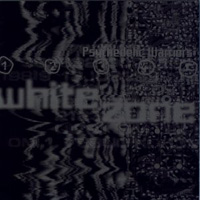During the eighties the psychedelic music of the previous decades was completely ignored or even ridiculed. However, that changed in the early nineties. Bands like The Orb started to blend elements from acid house, psychedelic and ambient music of the seventies. It was not only the start of a new musical style, but it also started a revival of seventies music. Suddenly Ozric Tentacles found themselves Ė much to their surprise Ė in the album charts with Jurassic Shift. Porcupine Tree, another new band, got in the single charts with the 30-minute (!) long Voyage 34, a musical translation of an LSD-trip. Original bands like Gong were discovered by a new generation and they reunited, started touring again and recording new material. Soon the old hippies discovered that the new rave parties had the same atmosphere as the free festivals of the former decades, and they got involved with the new music scene. Steve Hillage and his wife Miquette Giraudy formed trance outfit System 7, Astralasia was a side-project of members from the Magic Mushroom Band and ex-Ozric Tentacles members Joie Hinton and Merv Pepler formed Eat Static. Meanwhile Hawkwind was still around and they also noticed a renewed interest in their music by a new generation. Astralasia had remixed the Hawkwind-classics Spirit Of The Age and Uncle Samís On Mars and had coordinated a remix album Future Reconstruction, Ritual Of The Solstice. In 1993 Hawkwind was reduced to a trio with Dave Brock on guitars, vocals and keyboards, Alan Davey on bass, vocals, guitars and keyboards and Richard Chadwick on drums, percussion and programming. On that yearís album Itís The Business Of The Future To Be Dangerous, Hawkwind already started to integrate ambient and acid house elements in their music. Following the album was the Business Trip-tour in November and December 1993 and this resulted in a live album in 1994 that also contained some studio material. A lot of songs were left-overs from recording both these albums. Late 1994, after the 25th anniversary tour was finished, the band returned to the studio to record an entirely instrumental album comprising this material. In February 1995 the album White Zone was released. Since it wasnít the usual space-rock music, this album was released as a Psychedelic Warriors-album. It was meant to be a successor of Church Of Hawkwind (1982), an album that was born out of desire to experiment with different musical styles as well. White Zone didnít become a big success. Most Hawkwind- fans didnít like it, so it didnít break new grounds. The band members were already looking forward to do a tour in the United States and Canada and were busy recording their next studio album Alien 4. And so White Zone is only a curio in the large Hawkwind-catalogue. Since its original release the album is available again with this rerelease. White Zone does have some great tracks on it, although as a whole the album is quite diverse and experimental. Still I think itís better than some of the regular Hawkwind-albums. It illustrates that they were still able to find new ways after being around for 25 years. *** Erik Gibbels (edited by Peter Willemsen) Where to buy? |
